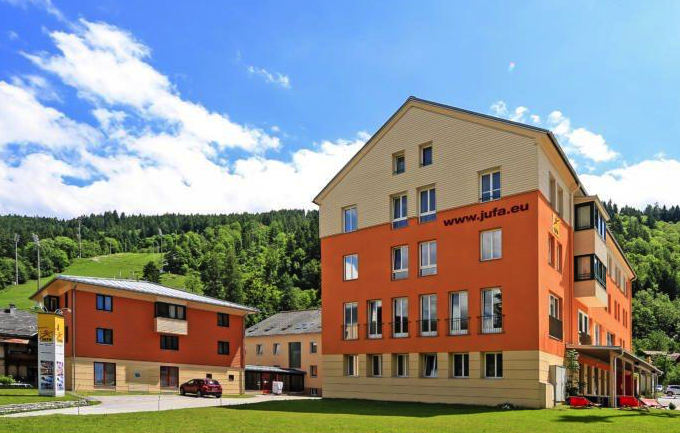Excited QCD 2019
Schladming, Austria
WELCOME TO EXCITED QCD 2019!
The 2019 edition of Excited QCD will take place from Jan 30 to Feb 3 2019, in the ski resort Schladming in Austria. The location is perfect for those who love winter sports, nature and good food. The JUFA Hotel, placed in the centre of the Schladming ski resort will host the meeting.

ABOUT THE WORKSHOP
This edition is the tenth in a series of workshops that had been previously organised in Poland (2009), Slovakia (2010 and 2015), France (2011), Portugal (2012, 2016 and 2017), Bosnia and Herzegovina (2013 and 2014) and Serbia (2018).
The workshop covers diverse aspects of QCD:
(i) QCD at low energies: excited hadrons, new resonances, glueballs, multiquarks.
(ii) QCD at high temperatures and large densities: heavy-ion collisions, jets, diffraction, hadronisation, quark-gluon plasma, holography, colour-glass condensate, compact stars, applications to astrophysics.
Emphasis is placed on new developments in theory as well as the current experimental status. Scientific atmosphere, various discussions about different topics in QCD, active participation of many young researchers and a nice environment have been the main characteristics of the previous editions and also represented the goals for the new edition. The talks are all plenary, 20' long separated by 10' for discussions and with a coffee break of 30' every three or four talks for more discussions. An extended lunch break allows for longer discussions and for inspiring open-air activities.
VENUE
| The meeting will take place in Schladming, Styria, the "green heart" of Austria. It is one of the biggest and most famous ski resorts in Austria, hosting the annual FIS Ski Worldcup Championships, with the well known Schladming Night Race on January 29, 2019. Cut fresh tracks through the snow across 230 kilometers of perfectly groomed slopes. From easy family hills to challenging black-rated runs for experts, you are bound to find a piste destined to become your own personal favorite. From one mountain to the next, the “Schladming 4-Mountain Ski Area” in Ski amadé, including the Hauser Kaibling, Planai, Hochwurzen and Reiteralm, makes it possible without any interruptions. Unique experiences as well as fantastic alpine and cross-country skiing enjoyment at 2700 meters above sea level are guaranteed by the Dachstein Glacier. |
|
The conference hotel, where participants will stay and where the conference will run, is the JUFA Hotel Schladming, placed at the foot of a ski resort only 2-minute walk from the nearest ski lift. In the picture below you can actually see the light poles from the FIS night race slope in the background...
IMPORTANT: book your room ASAP
We advise the participants to book as soon as possible their rooms because Schladming is a very touristic place, especially during ski season. Participants should book their rooms directly at the JUFA Hotel, sending an email or calling (+43 57 08 33 30), and mentioning they are attending Excited QCD 2019. We reserved 25 double rooms at the following rates until October 2018, after October the rooms are not guaranteed but rates stay the same:
- double or twin room - 65,50 €,
- accompanying person - 61,00 €,
- single room extra charge - 30,00 €,
- apartment (4-5 persons)- 59,00 €.
The rates are from January 30 to February 3, Wednesday is arrival day with Welcome dinner, the scientific program will start on Thursday! The price is per person per night on half board base - it includes breakfast and dinner, coffee breaks, WiFi, hotel insurance, unlimited use of Wellness & Spa centre and the gym. The price does not include tax of 1.50 € per person per night. There are many bars, shops and restaurants nearby.
Since the JUFA rooms are selling out quickly, there are a few alternative options nearby..
Organising Committee
